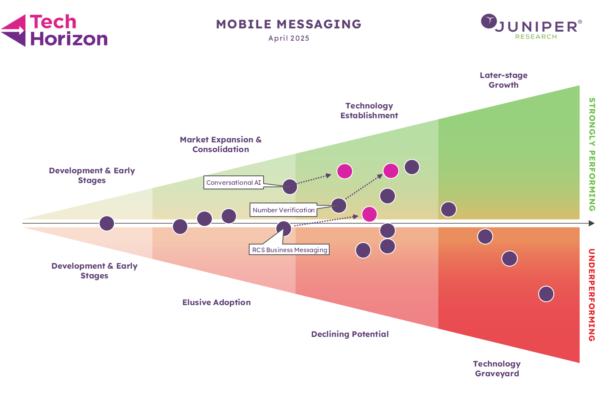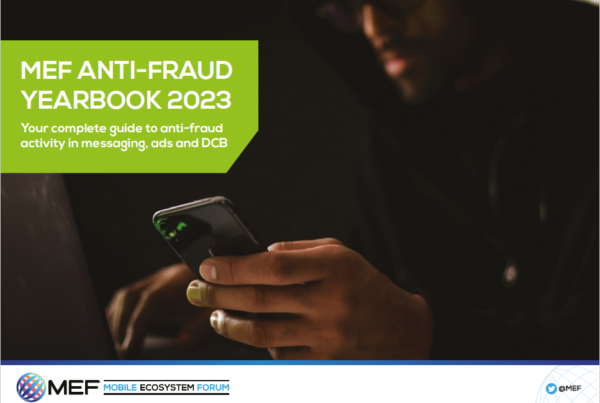Mobilesquared have released their Global A2P SMS messaging forecasts Databook, taking an in-depth look at the projected growth of the global A2P SMS industry, including the potential impact of RCS. Here Chief Analyst Nick Lane shares some of the highlights.
We have been tracking the A2P SMS space for the last five years. So it’s fair to say that the release of our latest Databook, Global A2P SMS messaging forecasts by country, 2017-2022, is the culmination of 5 years work, borne out of extensive industry and enterprise research.
The response from the messaging community following the release of our previous A2P SMS Databook in July 2016, has been to become more transparent and share more data, insight and intelligence with Mobilesquared to ensure that when we feed that into our forecasting model, our data becomes an invaluable tool for accurate future market modelling.

To this end, we have undercut our own forecasts and slashed our growth projections. But these are forecasts based 100% on industry data. So if revenues are lower than expected, that is why. If growth is lower than previously projected, that is why.
But let’s focus on the reason we are all in this industry, revenues.
Mobilesquared data reveals that the global A2P SMS messaging market was worth US$11.86 billion in 2017, that it will increase to US$17.02 billion in 2018, and continue rising to US$26.61 billion in 2022.
Over the 2017-22 forecast period, the market will grow at a compound annual growth rate (CAGR) of 17.5%. Or put another way, growth of around 125%. So the market will more than double in the next five years. That has to be good news for any business in the A2P SMS ecosystem.
Throughout the forecast period, Asia will remain the largest market, although Africa and the Caribbean will experience the greatest increase in spend between 2017-2022, with a CAGR of approximately 17.8% each.
With almost 50% of mobile operators* having deployed a next-generation SMS firewall, not surprisingly, white-route traffic overtook grey-route traffic for the first time last year. What’s more, with more mobile operators capable of terminating A2P SMS traffic, it’s a sector that is now generating good revenues for them.
Mobilesquared data reveals that mobile operators retained 75.4% of total revenues in 2017, with aggregators (including cloud service providers, etc) splitting the remainder. By 2022, mobile operators will see their proportion of overall revenues grow to 83.7%.
But the big question facing the messaging industry is the impact RCS will have on A2P SMS.
Mobilesquared forecasts that the RCS impact on A2P SMS will initially be limited given the late commercial launches in 2018 on Android, and potentially late-2019 on other smartphones. However, by the end of 2022, between 8.4% to 10.8% of A2P SMS white route revenues could be lost to RCS.
The first wave of traffic migrating from A2P SMS onto A2P RCS is expected to be promotional and marketing, but the potential remains for 2FA (two-factor authentication), alerts and updates to follow, which could mean the impact on A2P SMS messaging could triple at least.
For the time being, A2P SMS is in very good health.
*Mobilesquared tracks the top 200 markets globally, and the 649 mobile operators within each market. Any reference to mobile operators by Mobilesquared is based on our universe of 649 mobile operators.
Download the Mobilesquared Databook now
Global A2P SMS messaging forecasts by country, 2017-2022 contains the most comprehensive coverage of the global A2P SMS market, including:
- Grey & white route traffic by region, country, mobile operator & subscription (including domestic/ international, enterprise sector & message type)
- Grey & white route revenues by region, country, mobile operator, total aggregators & subscription (including potential & lost revenues)
- All with two impact models from RCS adoption
MEF members get a 30% discount on orders placed by March 31, 2018.






